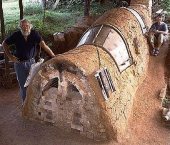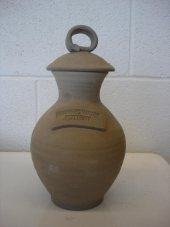





Find me running the NW Restoration group page on Facebook - a communal effort to share information about permaculture, ecological restoration and sustainability in the great Northwest!








"the qualities of these bacteria, like the heat of the sun, electricity, or the qualities of metals, are part of the storehouse of knowledge of all men. They are manifestations of the laws of nature, free to all men and reserved exclusively to none." SCOTUS, Funk Bros. Seed Co. v. Kale Inoculant Co.




Brenda
Bloom where you are planted.
http://restfultrailsfoodforestgarden.blogspot.com/





Find me running the NW Restoration group page on Facebook - a communal effort to share information about permaculture, ecological restoration and sustainability in the great Northwest!








Find me running the NW Restoration group page on Facebook - a communal effort to share information about permaculture, ecological restoration and sustainability in the great Northwest!












Find me running the NW Restoration group page on Facebook - a communal effort to share information about permaculture, ecological restoration and sustainability in the great Northwest!




 I think it depends on type really.
I think it depends on type really.



"the qualities of these bacteria, like the heat of the sun, electricity, or the qualities of metals, are part of the storehouse of knowledge of all men. They are manifestations of the laws of nature, free to all men and reserved exclusively to none." SCOTUS, Funk Bros. Seed Co. v. Kale Inoculant Co.












 ) I'll post pics. It should be fun. I only fire my kiln about once every few months though, so it might take some time before I can build enough stuff to fill the thing again.
) I'll post pics. It should be fun. I only fire my kiln about once every few months though, so it might take some time before I can build enough stuff to fill the thing again. 




Find me running the NW Restoration group page on Facebook - a communal effort to share information about permaculture, ecological restoration and sustainability in the great Northwest!




 Put on a jacket if you are cold kids!!! Hugel beds are cool but . . .firing the kiln is way cooler than that.
Put on a jacket if you are cold kids!!! Hugel beds are cool but . . .firing the kiln is way cooler than that. 




Find me running the NW Restoration group page on Facebook - a communal effort to share information about permaculture, ecological restoration and sustainability in the great Northwest!




Bert Harvey "Tentamus" wrote:is there a way to create terra cotta balls?
"the qualities of these bacteria, like the heat of the sun, electricity, or the qualities of metals, are part of the storehouse of knowledge of all men. They are manifestations of the laws of nature, free to all men and reserved exclusively to none." SCOTUS, Funk Bros. Seed Co. v. Kale Inoculant Co.




Find me running the NW Restoration group page on Facebook - a communal effort to share information about permaculture, ecological restoration and sustainability in the great Northwest!




"the qualities of these bacteria, like the heat of the sun, electricity, or the qualities of metals, are part of the storehouse of knowledge of all men. They are manifestations of the laws of nature, free to all men and reserved exclusively to none." SCOTUS, Funk Bros. Seed Co. v. Kale Inoculant Co.









Find me running the NW Restoration group page on Facebook - a communal effort to share information about permaculture, ecological restoration and sustainability in the great Northwest!








Find me running the NW Restoration group page on Facebook - a communal effort to share information about permaculture, ecological restoration and sustainability in the great Northwest!













Find me running the NW Restoration group page on Facebook - a communal effort to share information about permaculture, ecological restoration and sustainability in the great Northwest!








Find me running the NW Restoration group page on Facebook - a communal effort to share information about permaculture, ecological restoration and sustainability in the great Northwest!








Find me running the NW Restoration group page on Facebook - a communal effort to share information about permaculture, ecological restoration and sustainability in the great Northwest!









|
Looky! I'm being abducted by space aliens! Me and this tiny ad!
A rocket mass heater heats your home with one tenth the wood of a conventional wood stove
http://woodheat.net
|







